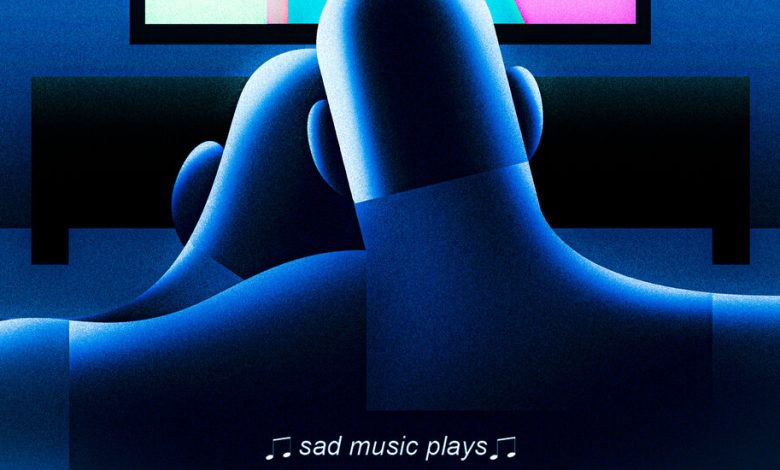Can’t Hear the Dialogue in Your Streaming Show? You’re Not Alone.

“What did he simply say?”
Those are a number of the mostly uttered phrases in my dwelling. No matter how a lot my spouse and I crank up the TV quantity, the actors in streaming films and exhibits have gotten more and more obscure. We often find yourself turning on the subtitles, even though we aren’t hard of hearing.
We’re not alone. In the streaming period, as video consumption shifts from film theaters towards content material shrunk down for televisions, tablets and smartphones, making dialogue crisp and clear has grow to be the leisure world’s hardest expertise problem. About 50 p.c of Americans — and the majority of young people — watch movies with subtitles on more often than not, in response to surveys, largely as a result of they’re struggling to decipher what actors are saying.
“It’s getting worse,” stated Si Lewis, who has run Hidden Connections, a house theater set up firm in Alameda, Calif., for almost 40 years. “All of my clients have points with listening to the dialogue, and plenty of of them use closed captions.”
The garbled prattle in TV exhibits and films is now a broadly mentioned drawback that tech and media corporations are simply starting to unravel with options corresponding to speech-boosting software program algorithms, which I examined. (More on this later.)
The situation is advanced due to myriad elements at play. In large film productions, skilled sound mixers calibrate audio ranges for conventional theaters with strong speaker methods able to delivering a variety of sound, from spoken phrases to loud gunshots. But whenever you stream that content material by way of an app on a TV, smartphone or pill, the audio has been “down blended,” or compressed, to hold the sounds by way of tiny, comparatively weak audio system, stated Marina Killion, an audio engineer on the media manufacturing firm Optimus.
It doesn’t assist that TVs preserve getting thinner and extra minimal in design. To emphasize the image, many fashionable flat-screen TVs disguise their audio system, blasting sound away from the viewer’s ears, Mr. Lewis stated.
There are additionally points particular to streaming. Unlike broadcast TV packages, which should adhere to rules that forbid them from exceeding particular loudness ranges, there aren’t any such guidelines for streaming apps, Ms. Killion stated. That means sound could also be wildly inconsistent from app to app and program to program — so when you watch a present on Amazon Prime Video after which swap to a film on Netflix, you in all probability must repeatedly regulate your quantity settings to listen to what persons are saying.
“Online is form of the wild, wild west,” Ms. Killion stated.
Subtitles are removed from an excellent resolution to all of this, so listed below are some treatments — together with add-ons to your dwelling leisure setup and speech enhancers — to attempt.
A speaker will assist
Decades in the past, TV dialogue might be heard loud and clear. It was apparent the place the audio system lived on a tv — behind a plastic grill embedded into the entrance of the set, the place they might blast sound instantly towards you. Nowadays, even on the costliest TVs, the audio system are tiny and crammed into the again or the underside of the show.
“A TV is supposed to be a TV, nevertheless it’s by no means going to current the sound,” stated Paul Peace, a director of audio platform engineering at Sonos, the speaker expertise firm primarily based in Santa Barbara, Calif. “They’re too skinny, they’re downward and their exits aren’t directed on the viewers.”
Any proprietor of a contemporary tv will profit from plugging in a separate speaker corresponding to a soundbar, a large, stick-shaped speaker. I’ve examined many soundbars over the past decade, they usually have vastly improved. With pricing of $80 to $900, they are often extra price range pleasant than a multispeaker surround-sound system, and they’re easier to arrange.
Last week, I attempted the Sonos Arc, which I arrange in minutes by plugging it into an influence outlet, connecting it to my TV with an HDMI cable and utilizing the Sonos app to calibrate the sound for my lounge area. It delivered considerably richer sound high quality, with deep bass and crisp dialogue, than my TV’s built-in audio system.
At $900, the Sonos Arc is costly. But it’s one of many few soundbars available on the market with a speech enhancer, a button that may be pressed within the Sonos app to make spoken phrases simpler to listen to. It made a giant distinction in serving to me perceive the mumbly villain of the newest James Bond film, “No Time to Die.”
But the Sonos soundbar’s speech enhancer bumped into its limits with the jarring colloquialisms of the Netflix present “The Witcher.” It couldn’t make extra fathomable strains like “We’re in search of a woman and a witcher — her with ashen hair and patrician countenance, him a mannerless, blanched brute.”
Then once more, I’m unsure any speaker might assist with that. I left the subtitles on for that one.
Dialogue enhancers in apps
Not everybody desires to spend extra money to repair sound on a TV that already prices a whole lot of {dollars}. Fortunately, some tech corporations are beginning to construct their very own dialogue enhancers into their streaming apps.
In April, Amazon started rolling out an accessibility characteristic, referred to as dialogue increase, for a small variety of exhibits and films in its Prime Video streaming app. To use it, you open the language choices and select “English Dialogue Boost: High.” I examined the instrument in “Tom Clancy’s Jack Ryan,” the spy thriller with a solid of particularly unintelligible, deep-voiced males.
With the dialogue increase turned on (and the Sonos soundbar turned off), I picked scenes that had been onerous to listen to and jotted down what I believed the actors had stated. Then I rewatched every scene with subtitles on to verify my solutions.
In the opening of the present, I believed an actor stated: “That’s proper, you caught the ring on her — I believed you two had been making an attempt to work it out.”
The actor truly stated, “Oh, sorry, you continue to had the ring on — I believed the 2 of you had been making an attempt to work it out.”
Whoops.
I had higher luck with one other scene involving a telephone dialog between Jack Ryan and his former boss planning to get collectively. After reviewing my outcomes, I used to be delighted to appreciate that I had understood all of the phrases appropriately.
But minutes later, Jack Ryan’s boss, James Greer, murmured a line that I couldn’t even guess: “Yeah, they had been utilizing that in Karachi earlier than I left.” Even dialogue enhancers can’t repair an actor’s lack of enunciation.
In conclusion
The Sonos Arc soundbar was useful for listening to dialogue with out the speech enhancer turned on more often than not for films and exhibits. The speech enhancer made phrases simpler to listen to in some conditions, like scenes with very soft-spoken actors, which might be helpful for individuals who are hearing-impaired. For everybody else, the excellent news is that putting in even a less expensive speaker that lacks a dialogue mode can go a great distance.
Amazon’s dialogue booster was no magic bullet, nevertheless it’s higher than nothing and begin. I’d like to see extra options like this from different streaming apps. A Netflix spokeswoman stated the corporate had no plans to launch the same instrument.
My final piece of recommendation is counterintuitive: Don’t do something with the sound settings in your TV. Mr. Lewis stated that fashionable TVs have software program that mechanically calibrate the sound ranges for you — and when you fiddle with the settings for one present, the audio could also be out of whack for the following one.
And if all else fails, after all, there are subtitles.



